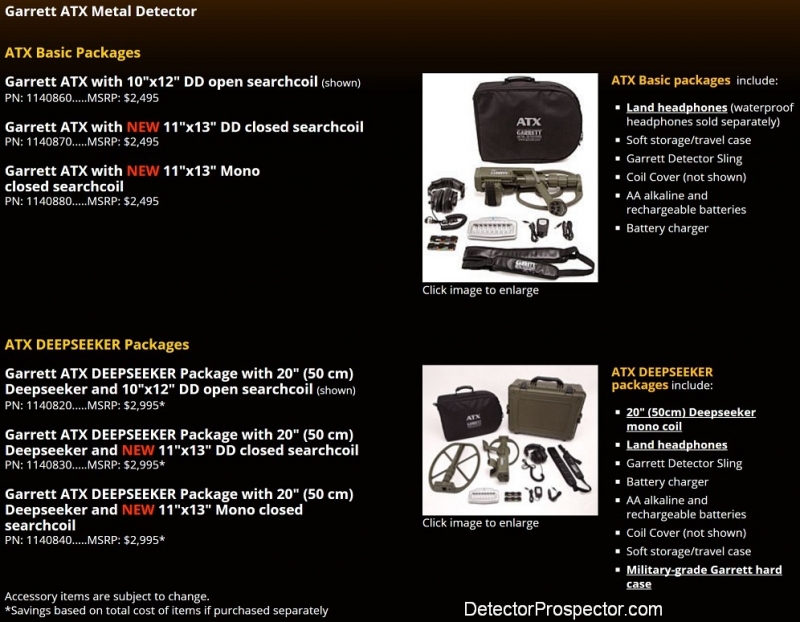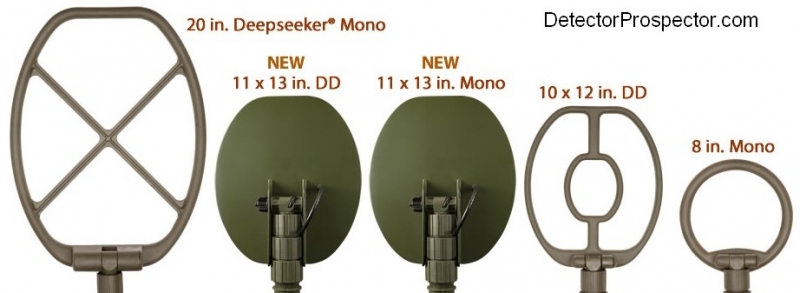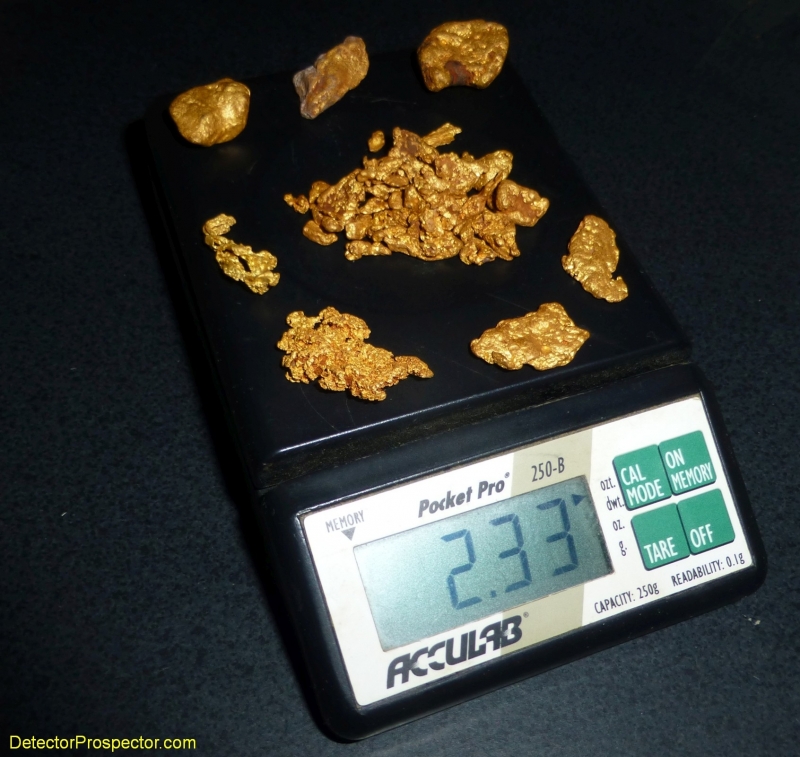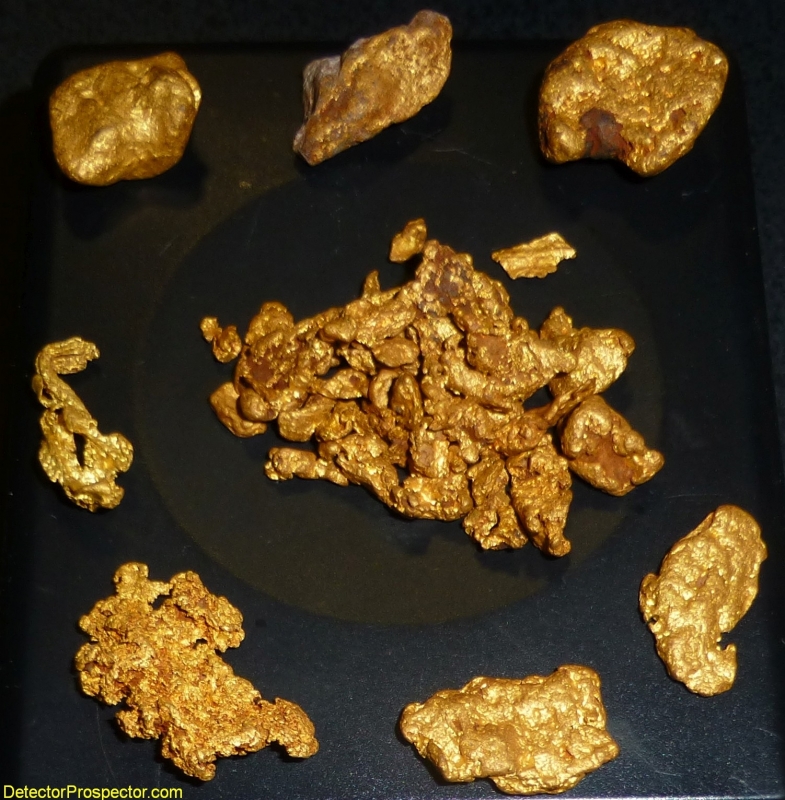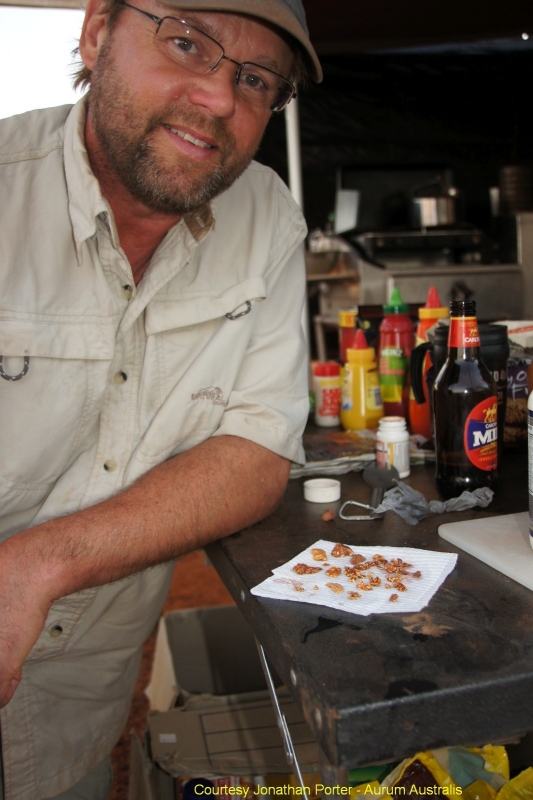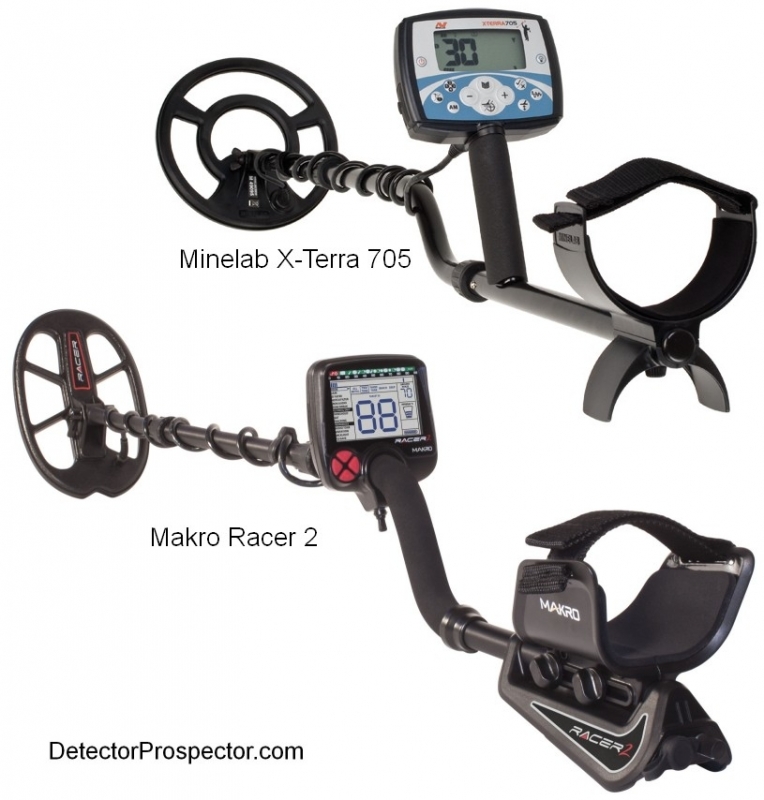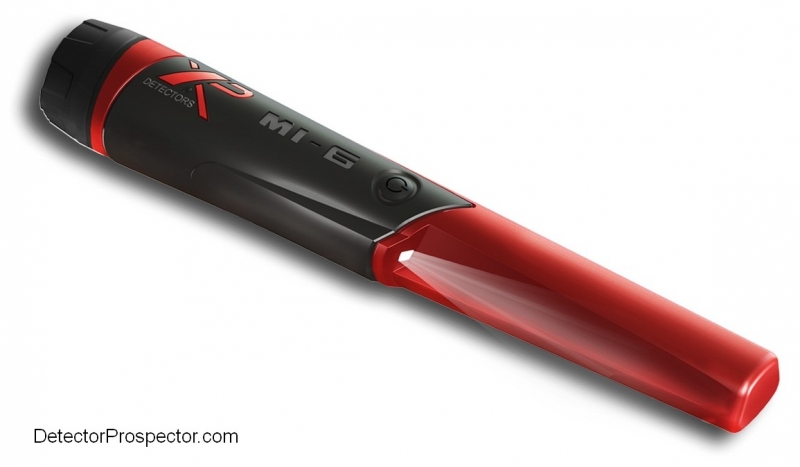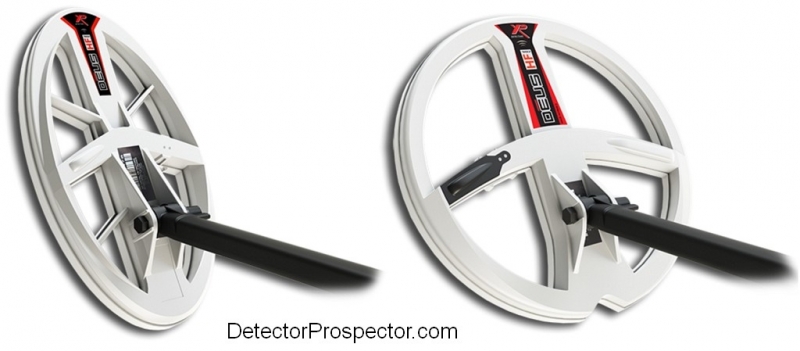-
Posts
19,795 -
Joined
Content Type
Forums
Detector Prospector Home
Detector Database
Downloads
Everything posted by Steve Herschbach
-
The new 11" x 13" mono and DD closed coil options have now been incorporated into new detector packages for 2017. This means you can get your choice of one of several stock coil options when buying a new ATX. I would like to see more of this from manufacturers so good for Garrett! Prices below are manufacturer suggested retail price (MSRP) so figure 15% off for internet pricing. More details at the Garrett website.
-

Question For Them What Knows??
Steve Herschbach replied to Rod K's topic in Detector Prospector Forum
When it comes to metal detecting and prospecting for gold blanket statements are almost never true. In general when dealing with highly mineralized ground and hot rocks PI detectors will be the better choice, especially with new models highly sensitive to gold that older PI detectors would miss. However, if hunting areas with nothing but very tiny gold or wire gold a hot VLF may be the way to go. PI detectors by the nature of how they function do not hit gold as small as a hot VLF, where small is measured in tenths of grains instead of tenths of grams. There are also some areas so dense with man made ferrous iron and steel trash that a good discriminating VLF can have the edge. It simply depends on the situation. I personally think both types of detectors, PI and VLF, are essential for any well outfitted detecting kit. -

Gold Rush In Colorado
Steve Herschbach replied to Clay Diggins's topic in Gold Panning, Sluicing, Dredging, Drywashing, Etc
Thanks Jason. This is the kind of country I learned to detect in, where the Fisher Gold Bug 2 and White's Goldmasters/GMT reigned supreme. The fun part about glacial deposits is little hot spots can occur almost anywhere, and oddball out of place large nuggets are not impossible. Two grain nuggets may not seem impressive, but if you can find a dozen or more a day with a hot detector they do add up. -

Gold Rush In Colorado
Steve Herschbach replied to Clay Diggins's topic in Gold Panning, Sluicing, Dredging, Drywashing, Etc
I finally gave the large image a go on my PC. I am guessing about two minutes to download but once loaded - what fun! The link through to the appropriate report is handy. Looks like lots of gold there, but since it is from glacial moraines or concentrated out of the moraines the chances for metal detecting are slim at best. Better place for panning, sluicing, and dredging. -

Steve's 2011 Australia Gold Adventure
Steve Herschbach replied to Steve Herschbach's topic in Detector Prospector Forum
I have to admit that by this time I was ready to go home. A month is a long time to be away, especially when sleeping in a small tent on the ground every night. The near perfect weather the entire time was a blessing in that regard, making camp life more pleasant than it would have been under harsher conditions. Just a reminder that on every day of this trip we were up at daybreak and hunting until the light faded. Thu Sep 22 - One thin nugget Fri Sep 23 - This was the day that was posted earlier with video #2 where we hunted a gully and I found my "Dragon Nugget". My total for day 3.6 grams. Sat Sep 24 - One nugget Sun Sep 25 - 12 grams! Mon Sep 26 - Last day of detecting, I found four nuggets at 1.5 grams total. I hunted the perimeters of a patch finding my last four nuggets, with the last in a nearby wash. We left Jonathan in the field after saying our farewells. An early morning departure put us back in Perth by that evening. We returned our borrowed vehicle with thanks to Jonathan's friends and after a day's rest and a short tour of Perth were on our way back home. So how did we do? Chris ended up with 38 grams of gold. I found about half as many nuggets as Chris did, but they were larger nuggets and so my total was 74.5 grams. JP of course outdid us both with 123.5 grams. In general Chris used standard sized coils and stayed in the main patch areas, accounting for why he got twice as many nuggets as I did but for them also being smaller in size. The video shows this to good effect. I ran an 18" round mono most of the trip and concentrated more on looking for larger gold and though I found fewer nuggets they ended up weighing more in total. One thing I decided going over was that hunting the main patch areas was not likely to make an exceptional find. I do believe that large nuggets get cleaned out early, and nearly every patch we hunted was well known and hunted by many people over the years. In that regard we were doing what any visitor could do because we stuck to easily accessible areas. I therefore spent at least half my time every day running long solo loops away from the main areas hoping to find an overlooked area in some little corner - a tiny virgin patch of my own. There was also the few days we spent doing pure blue sky detecting that came up dry. The reality is my many hours spent hunting off the main patch areas was almost totally non-productive, with only a few nuggets found. I am sure in retrospect that I could have increased my gold take by staying closer in to the main patch areas. JP with his superior knowledge hit the perfect balance between Chris staying more in the well hunted areas and my long treks well off the known patch areas. That and his superb knowledge of the GPX 5000 were a joy to experience in person. I have to admit I was surprised I could not come up with anything of note by wandering off on my own for so much of the trip. Almost everywhere you go in Australia it all looks like fantastic ground with many indicators that gold should be likely. And yet covering huge areas of fantastic looking ground usually produced not a single nugget. It is much different than where I am hunting in Nevada these days, where lone isolated nuggets seem to pop up regularly in oddball locations. Where we were in Australia it was much more like you were either in a patch or out of it, and if out of it nothing would be found. I can't say I regret making those long side hunts because I do love wandering around and exploring, but in this case staying closer in to the proven patch areas would have been more productive for me. This does show anyone wishing to visit Australia that it would pay to not get your expectations too high. Unless you have some superior access to remote areas, the amount of detecting that has taken place there over the decades is amazing. There were prospectors with detectors everywhere we went, and my guess is most of them are more serious prospectors than is the norm in the U.S. Chris and I lamented many times we had not made this trip in the 1980's. There is still gold to be found in Australia but the easy pickings are indeed long gone. It is very difficult for a visitor with limited local knowledge and limited time to do more than just be happy finding any gold at all. That about sums it up - a trip of a lifetime indeed. Thanks JP for being such a wonderful host and showing us your great country! -

Finally - The QED Arrives?
Steve Herschbach replied to Steve Herschbach's topic in Metal Detector Advice & Comparisons
Presumably with the numbers being sold we will also see used units available soon. Some people inevitably have expectations that can't be met or are just wanting to buy and try. It happens with every new detector and I do not think the QED will be any different. -
People send me emails or PMs asking questions and I now have a new policy whereby I will post and answer the question on the forum, then aim them at the answer on the forum (names left out). The whole point of asking questions on a forum is everyone gets to share the answer, plus other opinions can be sought. That gets lost with email and PM. "Regarding the Racer 2, I know you will point me in the right direction, I am looking for a Racer 2 or the X-Terra 705, will be doing coin and jewelry hunting as some beach hunting (two or three times a year) in dry and wet sand, so which one do you recommend? Or do you think they are about the same?" They are very similar detectors in a lot of ways and having used both I don’t think either has any particular magic ability over the other. Nothing a more casual user would perhaps discern anyway. If you are really into your detectors there are feature differences that may or may not be important to you so look carefully at the feature list of both detectors. For instance, if you are into tones, the Racer 2 has mono tone, two tone, or three tone hunt modes. The 705 has mono tone, dual tone, three tone, four tone, and 28 tone modes. However, on the X-Terra how those tones are laid out is preset and cannot be modified. The Racer 2 lets you shift the ranges on the two tone and three tone modes and even change the pitch of the sounds. So while the Racer 2 has a limit on the number of tones within those limits it has more ability to be customized. I like that. I also like full tones so the 28 tones on the 705 appeals to me. That is the sort of stuff one has to weigh. These are the sorts of things that matter to me and that I look at. People always talk about depth and that is a waste of time discussing in most cases. It varies due to the ground minerals at each location and all VLF detectors worth the name are so close it results in endless debates. It is just hair splitting. Now when it comes to picking out different closely spaced items one from the other the Racer 2 has an edge from being a faster response detector. This can help if picking through dense trash. But again, that is more a feature expert hunters appreciate. The Racer 2 runs at 14 kHz. The 705 can be had stock in 7.5 kHz or 18.75 kHz versions, and customized via coil options to run at 3, 7.5, or 18.75 kHz. This seems impressive but in real life has not been a huge factor with the X-Terra because having to change coils to change frequencies is cumbersome. Still, if chasing small gold nuggets was an issue the 705 at 18.75 kHz might have an edge though the Racer 2 is surprisingly hot for 14 kHz. The bottom line is it is like having me try and choose between two different sets of similar hiking boots for you. They are too close to tell which will fit you better and either way I could be wrong. I can use either detector and be happy. My best advice is scrutinize the feature list and both owner manuals online and see if any feature really pops out at you as being something you care about. Nokta/Makro Racer 2 and Minelab X-Terra 705
-
All I know is the politics of crime and punishment is beyond the scope of the forum. The main thing is it sucks this happened and we all hope your detectors get returned or at least compensated for somehow. And a warning to the rest of us that these things are very expensive and somebody might try to grab them. Be careful out there.
-

Finally - The QED Arrives?
Steve Herschbach replied to Steve Herschbach's topic in Metal Detector Advice & Comparisons
Well, at least one guy finding gold with a QED... https://www.prospectingaustralia.com.au/forum/viewtopic.php?id=20756 -

Steve's 2011 Australia Gold Adventure
Steve Herschbach replied to Steve Herschbach's topic in Detector Prospector Forum
The end of our month long trip to Australia is approaching. It is starting to sink in that the massive Australian nugget I had dreamt of finding was going to continue to be a dream. The flies were out in force now but we persevered trying new locations hoping to get lucky. Mon Sep 19 - Two nuggets, 0.8 gram Tue Sep 20 - Move to new location, no gold Wed Sep 21 - 3.6 grams, found a sunbaker -
The largest gem-quality diamond ever found in North America is on display at the Smithsonian for three months in its rough, uncut state. “It's a really unusual chance for people to see this rare diamond,” says Jeffrey Post, curator of the National Gem and Mineral Collection at the Smithsonian's National Museum of Natural History. “It isn't something that happens very often. This may be the only chance in your life to see such a thing.” Full article here
-

GPZ 7000 With 19" Coil On 3.6 Gram Nugget
Steve Herschbach replied to Steve Herschbach's topic in Minelab Metal Detectors
Probably too hot for the area for general hunting. It might make a found nugget pop better once found, but also light up ground noise and hot rocks when searching for unfound nuggets. -

Finally - The QED Arrives?
Steve Herschbach replied to Steve Herschbach's topic in Metal Detector Advice & Comparisons
Typical of what seems to happen on Aussie forums the two linked threads above have been locked over a misunderstanding. Hopefully it will get cleared up but if the links do not work that's why. In the meantime, here are some new videos on how to set up the QED: -
The plot thickens. The link I had was to the first volume of the 1996 second edition. The blog link Terry provided has links to the three volumes of the 2005 third edition. I have updated my original post with direct links. Bob Beste's "Location Guide for Rockhounds in the United States, 3rd. ed. 2005": Part I--Alabama through Idaho (PDF, 155 p.) Part II--Illinois through North Dakota (PDF, 186 p.) Part III--Ohio through Wyoming (PDF, 193 p.)
-
Just listing what I am seeing where I am seeing it, and seeing noting at Regton's yet. Just a note to everyone - any link I ever make to any dealer is not an endorsement of that dealer. I just link for informational purposes.
-

Be Careful When Climbing In The Hills!
Steve Herschbach replied to LipCa's topic in Detector Prospector Forum
Well good on you Harry for getting out and braving the elements - it paid off! -
Hmmmm..... A UK dealer and an Australian dealer are both listing the 9" round high frequency coil and the new pinpointer for sale, but neither lists the elliptical coil. Delayed maybe?
-

Detector Prospector Is Sadly Remiss
Steve Herschbach replied to klunker's topic in Detector Prospector Forum
My take was down last year but mainly due to being busy on other things. No complaints though. Renewed focus for 2017 is the plan. -

Be Careful When Climbing In The Hills!
Steve Herschbach replied to LipCa's topic in Detector Prospector Forum
Guessing that is a gold specie in the middle of the picture? -
There will both a round and an elliptical high frequency coil option...

